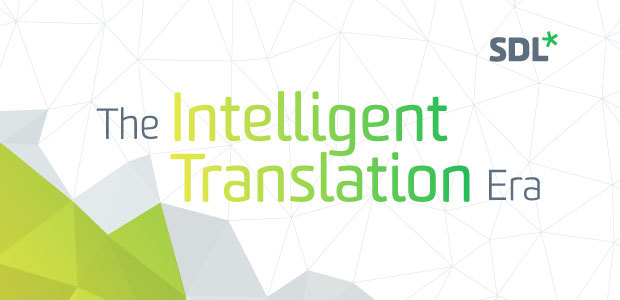Welcome to the Intelligent Translation Era
29 May 2019
5 min read

It’s no longer sustainable for companies to approach content in the traditional, siloed way. Especially if they want to engage with consumers globally, who spend around 6.5 hours a day on average consuming content on their digital devices, according to research by Hootsuite.
The ever-growing demand for content in every customer interaction far outstrips our ability to translate content with humans alone. Even as we streamline the process with neural machine translation (NMT), companies still struggle to translate content even into just a handful of languages – let alone dozens of languages across multiple markets. If the technology’s available, then why aren’t companies engaging with customers across 50, 60, even a 100+ languages?
An impossible content task
Let’s look at the numbers behind engaging with customers in just one language. The typical adult from Thailand spends more than 9 hours per day watching, reading, listening to or interacting with digital content. If we estimate that they read or consume about 300 words a minute that would amount to around 45,000 words a day – if they only spend a quarter of their online time reading content.
Now consider the cost of translating 45,000 words into Thai. The cost for what an average Thai adult reads in a day, at $0.16 a word (a standard translation rate), totals $7,200.
That’s before we add in standard costs like project management, formatting, and overheads for managing the translation and payment. All this adds another layer of complexity – and ultimately takes a big slice of time, and profitability.
From Going Global…
Most companies now define “going global” as generating revenue from another country, outside the one it operates in. This demands a lot of an organization in terms of translation, and in executing delivery, customer support, human resources and financial management. All these activities require content in some form or another along with translation investment.
Often, going global is a chicken-or-egg dilemma. Wait for sales to take off in a specific country before investing in translations? Or invest in translations first to build demand for sales? In the amount of time that it takes most organizations to make a decision, local competition has already built up the strength to compete, and suddenly, translation is the least important concern.
At the present rate of technological achievement and content sophistication, we argue that generating revenue in another country will not be the definition of “going global” in the future. When companies can translate every asset, every video, every website into as many languages as technology will allow, companies will be present in every market, because it’s possible to do so quickly and cheaply with the help of machines. Therefore true globalization isn’t just about generating revenue in another market.
… To Omnimarket
Being omnimarket, or the ability to translate all content for every language, is now the new “going global.” In an omnimarket environment, organizations no longer face the chicken and egg scenario. Machine-first translations make content available in every language so arguing about whether it’s worth the investment to translate or not is no longer relevant.
Rather than localizing top-tier content exclusively for established markets, omnimarket organizations translate everything for everyone and see where the chips fall.
They leverage machine-first, human-optimized systems to prioritize investments in undeveloped markets and expand their multi-channel translation footprint in developed markets. They connect and reach out with content first to nurture and cultivate relationships until interest is detected and a real connection established.
Once confirmed, humans take over to determine how content should be tailored to resonate further with the audience. “Human optimized” could mean transcreating an advert, message, hiring human salespeople, or setting up more substantial operations to deliver local customer support. Ultimately, machine-first human-optimized systems lead to more human and more relevant customer experiences in an intelligent translation era.
Linguistic Artificial Intelligence (AI) is a technology that can help to process, understand and generate content. Its goal is to find patterns and connections within content across languages. It does so to understand the intent of content and to organize it – without understanding what the content is, automating and scaling content processes is challenging. It’s technologies like these that companies should explore if they want to address their specific content challenges, and take advantage of the opportunities presented by an exciting, new intelligent translation era.
Over the coming months, we’ll reveal how you can introduce intelligence to your content supply chain. Watch out for our upcoming blog series exploring the Intelligent Translation Era in more detail. In the meanwhile, click here if you’d like to learn more about the Intelligent Translation Era, and how you can prepare your business for global growth.
Have you registered for SDL Connect? Don't miss out on the industry’s biggest annual event focused on content creation, translation and delivery. Registration is now open!

